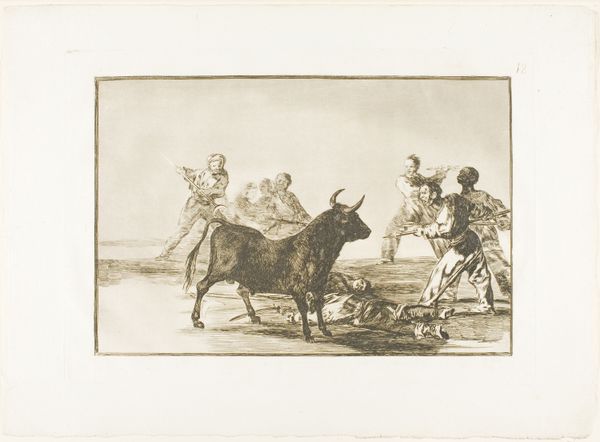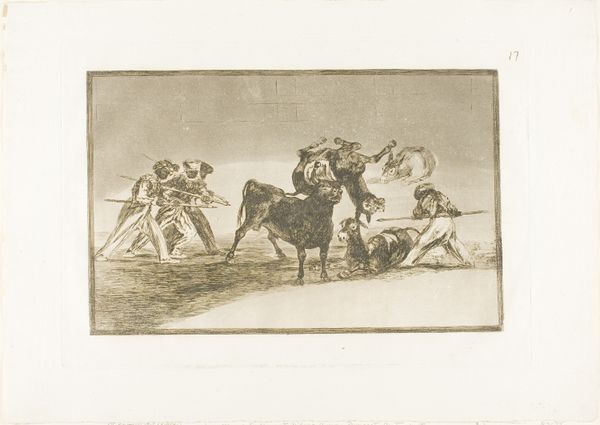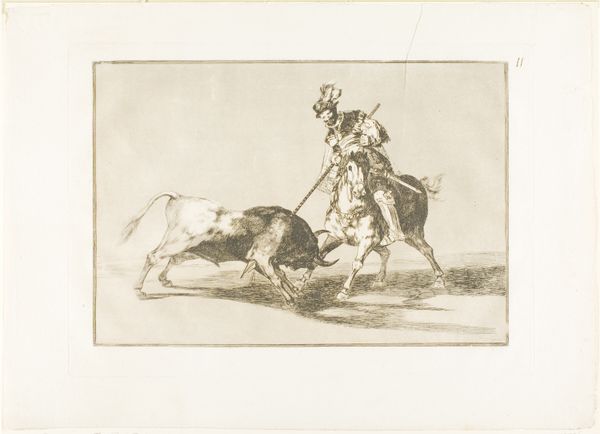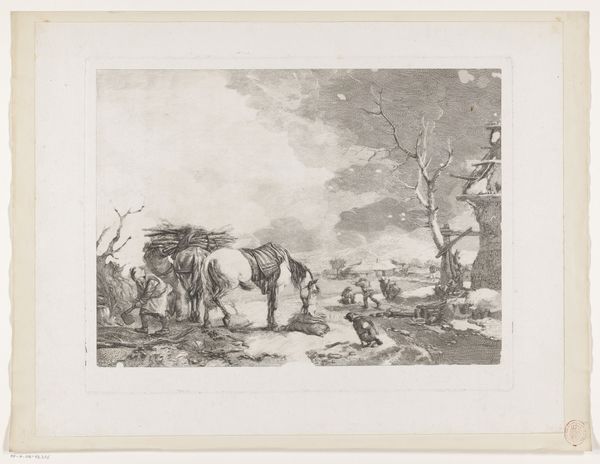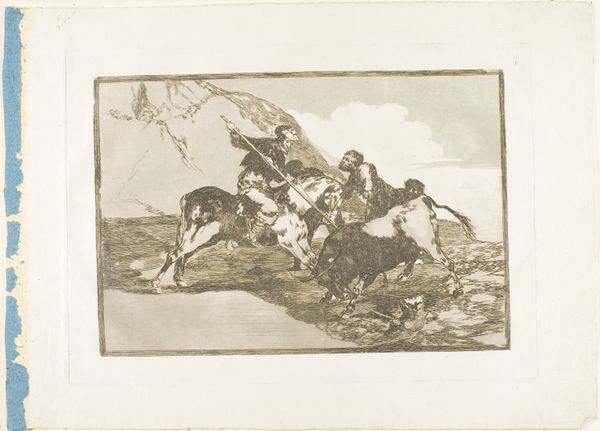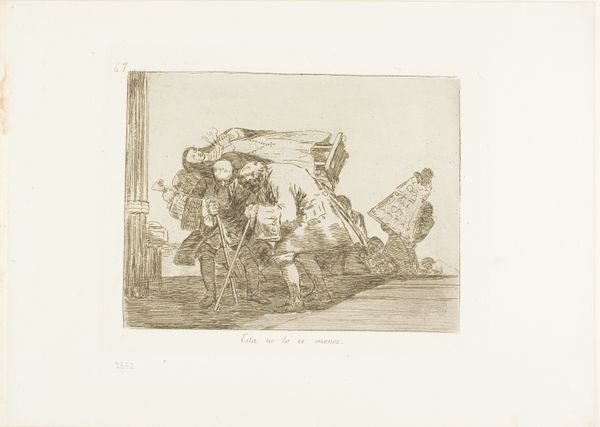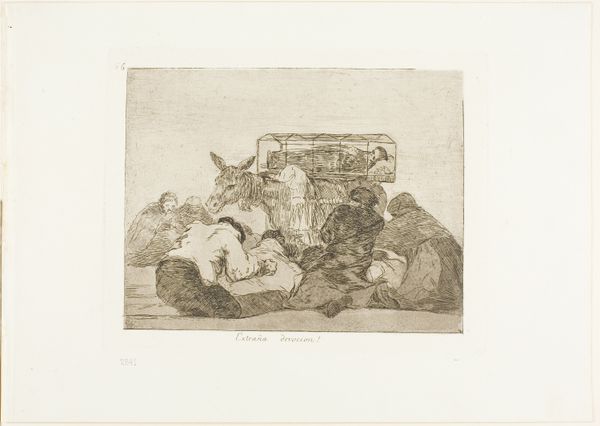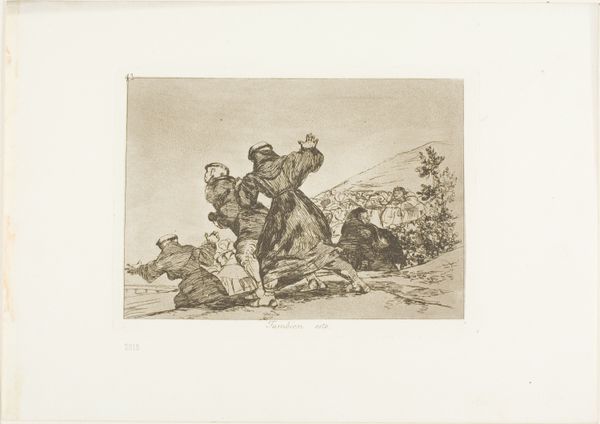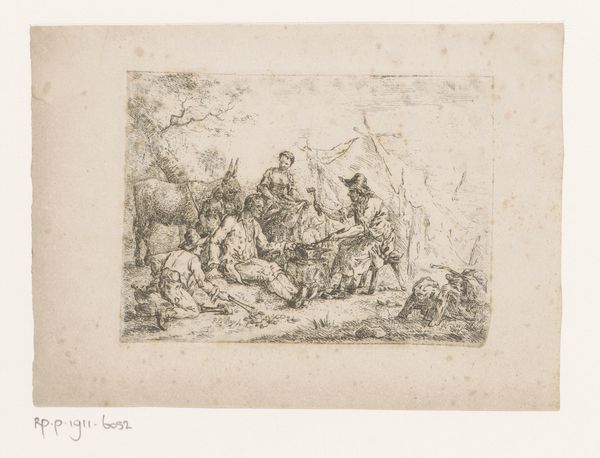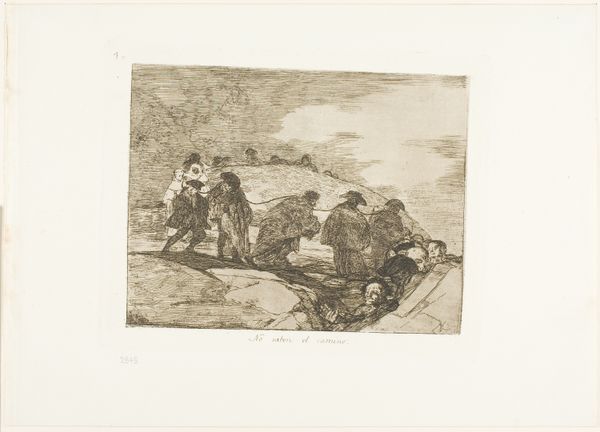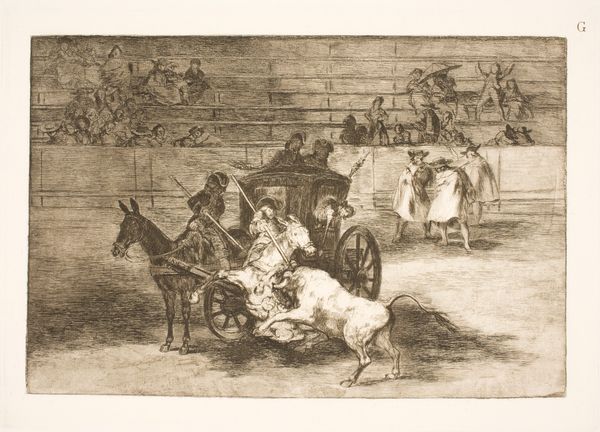
The Moors had settled in Spain, giving up the superstitions of the Koran, adopted this art of hunting, and spear a bull in the open, plate three from The Art of Bullfighting Possibly 1814 - 1816
0:00
0:00
drawing, print, etching, paper
#
action-painting
#
drawing
#
narrative-art
# print
#
etching
#
figuration
#
paper
#
romanticism
#
genre-painting
#
history-painting
Dimensions: 200 × 314 mm (image); 245 × 352 mm (plate); 323 × 446 mm (sheet)
Copyright: Public Domain
Curator: Editor: This is "The Moors had settled in Spain, giving up the superstitions of the Koran, adopted this art of hunting, and spear a bull in the open, plate three from The Art of Bullfighting," created by Francisco de Goya around 1814-1816. It's a print, an etching on paper, and it looks incredibly dynamic. I am intrigued by the choice of printmaking to depict something so violent. What do you see in this piece, considering its creation? Curator: What strikes me is Goya's use of etching to explore labor and spectacle. Bullfighting was and is, of course, deeply ingrained in Spanish culture, but Goya strips away the romanticism often associated with it. Notice the deep lines, the almost frantic energy in the etching – this points to the physical labor involved in producing both the image and the event it portrays. How do you think the relatively 'cheap' medium relates to the portrayed violence? Editor: That's a great point about the labor. It almost feels like he's democratizing the image by using printmaking, making this brutal spectacle accessible, or rather, undeniable, to a wider audience. Does that read into a political intention, then? Curator: Absolutely. Printmaking allowed for mass production and dissemination. By choosing etching, Goya positions this work as commentary. Think about who the audience was for these prints versus the audience for a painting commissioned by the aristocracy. The materials themselves become a tool for social critique. Consider the cost of paper and ink in his day versus a canvas and oils, and how it impacted the availability of such works of art for different layers of society. Editor: So, it's not just about depicting the bullfight, but also about the social structures and accessibility surrounding its representation. This piece makes me rethink the inherent value and purpose tied to different art forms, the socio-economic part that has influenced not just the theme but also production choices of this artwork! Curator: Exactly. By focusing on the materials and means of production, we can uncover layers of meaning often overlooked. A 'simple' print suddenly becomes a powerful statement about class, consumption, and the brutal realities of entertainment.
Comments
No comments
Be the first to comment and join the conversation on the ultimate creative platform.
